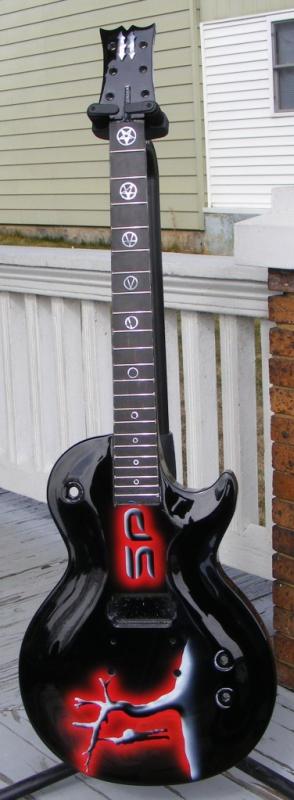Question
I have switched over to spraying automotive urethane topcoats on my guitars. I've only run into one problem so far and that is with the urethane clear coat lifting away from the edge of the ebony or rosewood fretboards. This is really driving me nuts! It never happened with nitro lacquer. It doesn't happen over areas that Iíve sprayed with primer. It only happens over the bare edge of the wooden fretboard. I think maybe the clear coat is so thick that itís not penetrating into the hard ebony or rosewood, and is flaking off.
Is there something I could use over bare wood that would prevent this from happening? I have a guitar sitting here made from 100% bubinga, and, I'm scared to paint it because it might all peel off!! A sealer? I was even thinking of coating the edge of the fretboards with thin superglue before clear coating in the future! Also.... should I be using such a product even under the primer?
Forum Responses
(Finishing Forum)
From contributor J:
You may be sanding the wood too fine for the finish to bite into. List your complete finish schedule from bare wood to finished product and you may get some better advice.
Sand body and neck to 220 grit.
Grainfill then resand to 220.
Tape off areas that will not recieve color (headstock inlay, side of fretboard).
Apply primer (2k for urethanes).
Cure overnight.
Level sand.
Re-apply primer if necessary (usually is).
Cure overnite.
Basecoat with PPG DBC basecoat.
Remove masking.
Topcoat with two coats of DC4000 clear.
Cure overnight.
Level sand to 600.
Apply artwork if necessary.
Apply two more coats of dc4000.
Cure overnight.
Finish sand and buff.
I want to eventually do transparent finishes over stained maple tops like I offer in lacquer, and I need to know what I can use over the stained wood to have the topcoats adhere. The autobody guys can't really help me here because the finishing system's "sealer" is opaqe, black white or grey. I know people have been painting guitars with urethanes for years, but, there isn't a "this is how you do it" page on their websites. The latest guitar can be seen below. I don't have a picture of the peeling but it can be seen in the picture at the bottom right of the fretboard as a whitish spot.

Are you also using paste filler under the primer? I would use a polyester primer instead and skip the filler. You will need to use an Isolante made by the polyester manufacturing before the primer, but you should be able to completely fill the grain with one spraying session. If you are using automotive colors like HOK or PPG I would still use the Chemcraft Isolante and then just go over it with your automotive paint. It will work fine but do samples first and test the adhesion before painting a guitar.